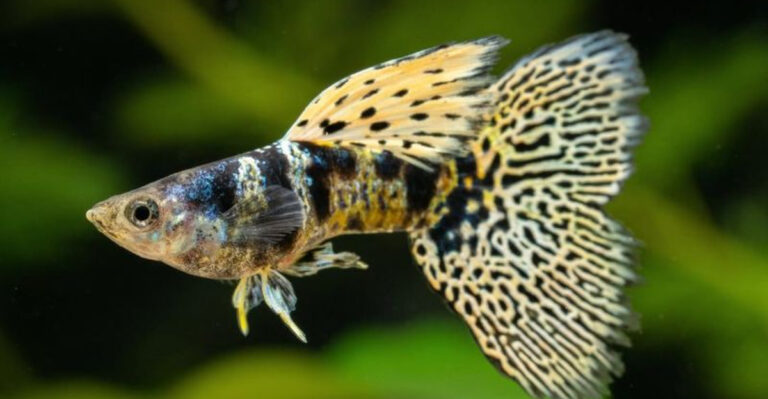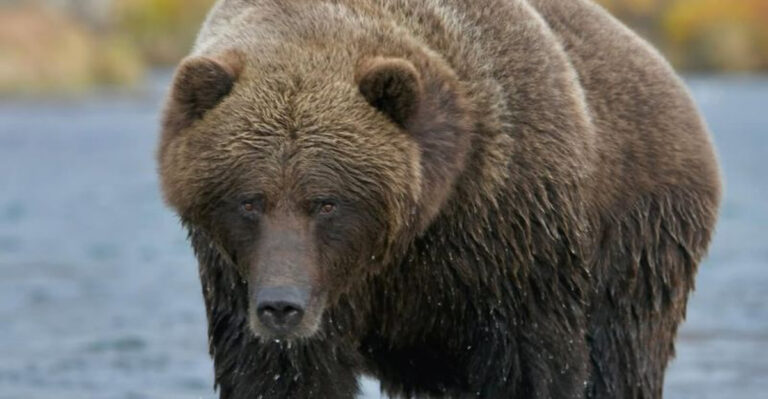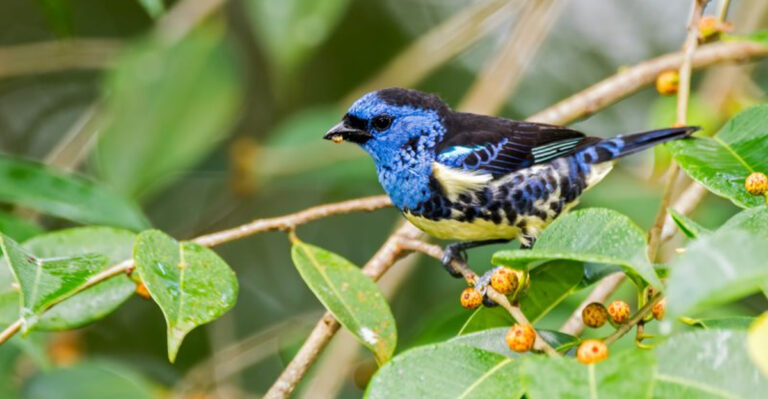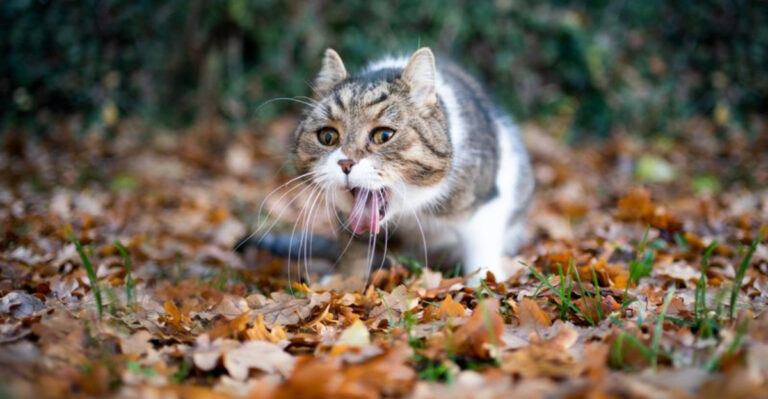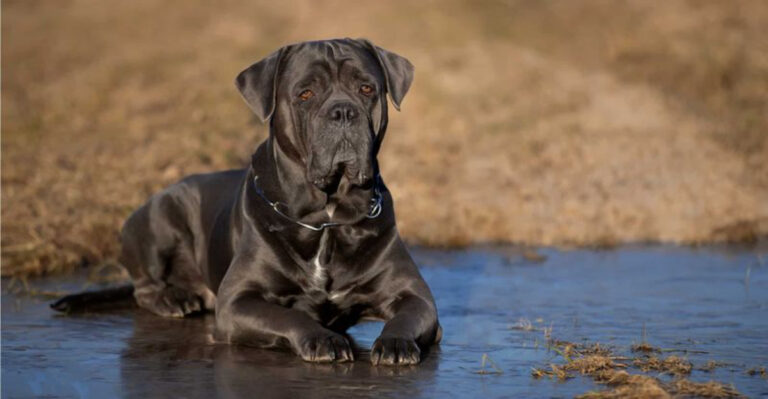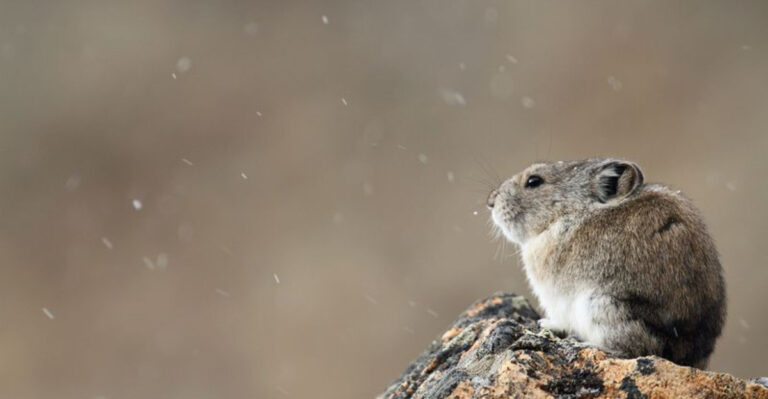17 Lizards That Need More Space Than You’d Think
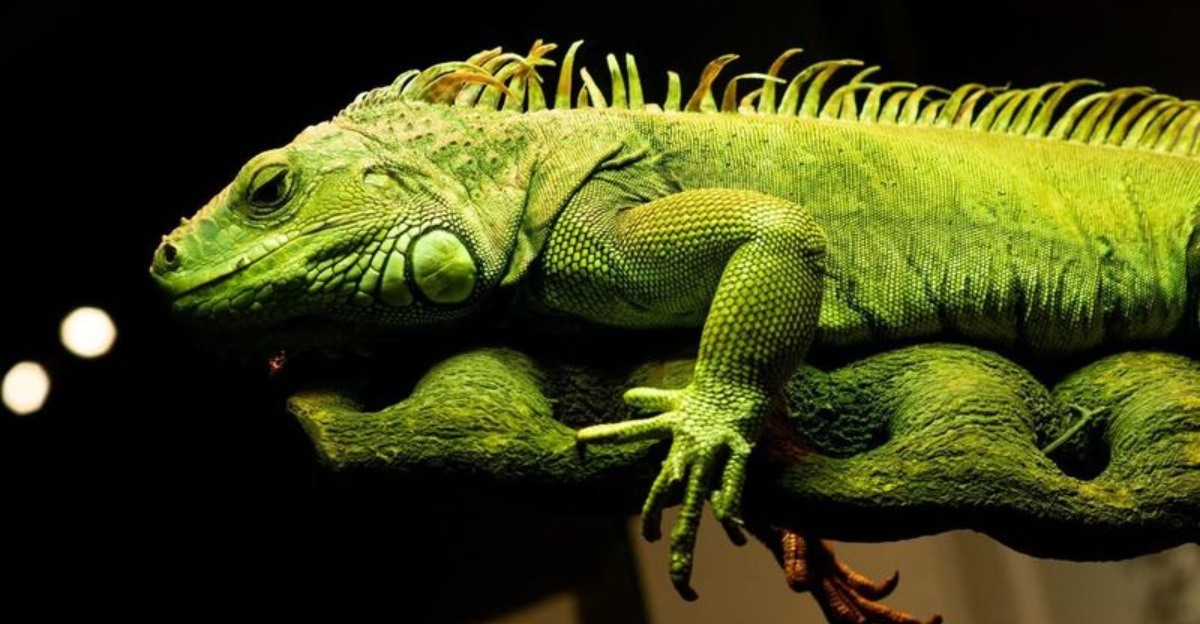
Lizards, those fascinating reptiles, often surprise us in myriad ways. But one of the most astonishing revelations is the sheer amount of space some of these creatures actually require.
Many assume these scaled beings are content in small terrariums or confined spaces.
However, the truth is far from it. Some lizards, with their sprawling limbs and active lifestyles, demand vast habitats that can mimic their natural environments. Let’s embark on a journey to explore lizard species whose spatial needs defy common expectations.
1. Argentine Black And White Tegu
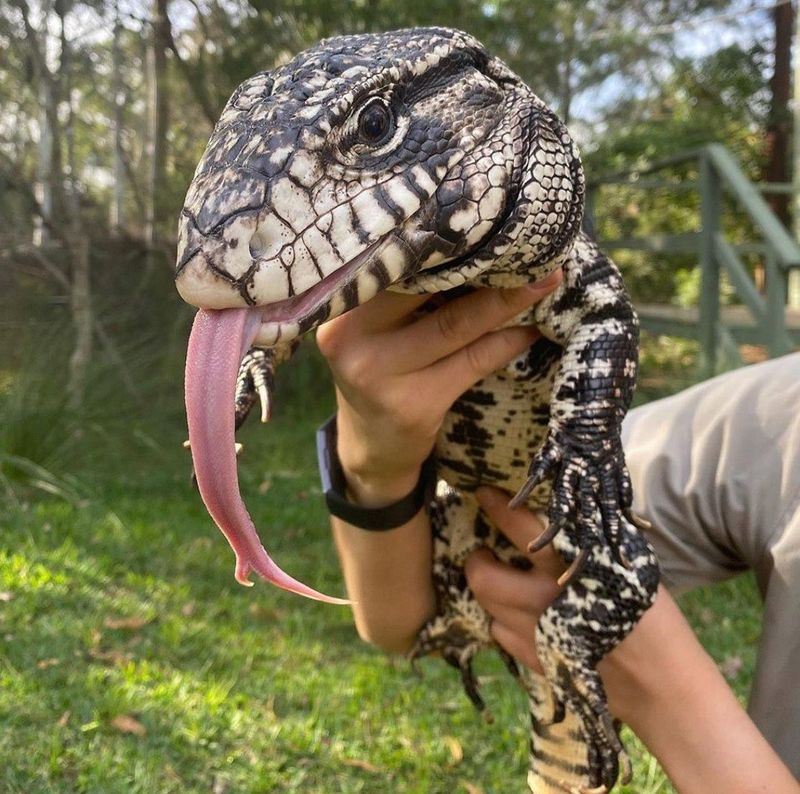
The Argentine Black and White Tegu is a powerhouse of a lizard, requiring more room than most anticipate. This species can grow over four feet long and is known for its intelligence and curiosity.
To accommodate a Tegu’s active lifestyle, owners need to provide a habitat that is at least 8 feet long and 4 feet wide. This ample space allows them to explore and dig, activities they naturally enjoy. The enclosure should mimic their South American home, with areas for burrowing and plenty of ground cover.
Without sufficient space, Tegus can become stressed and aggressive. Proper housing is essential to manage their high energy and to prevent boredom-related behaviors. They’re not just pets; they’re companions that require a significant commitment in terms of space and care. Providing a large and enriched environment is key to keeping a Tegu healthy and content.
2. Asian Water Monitor
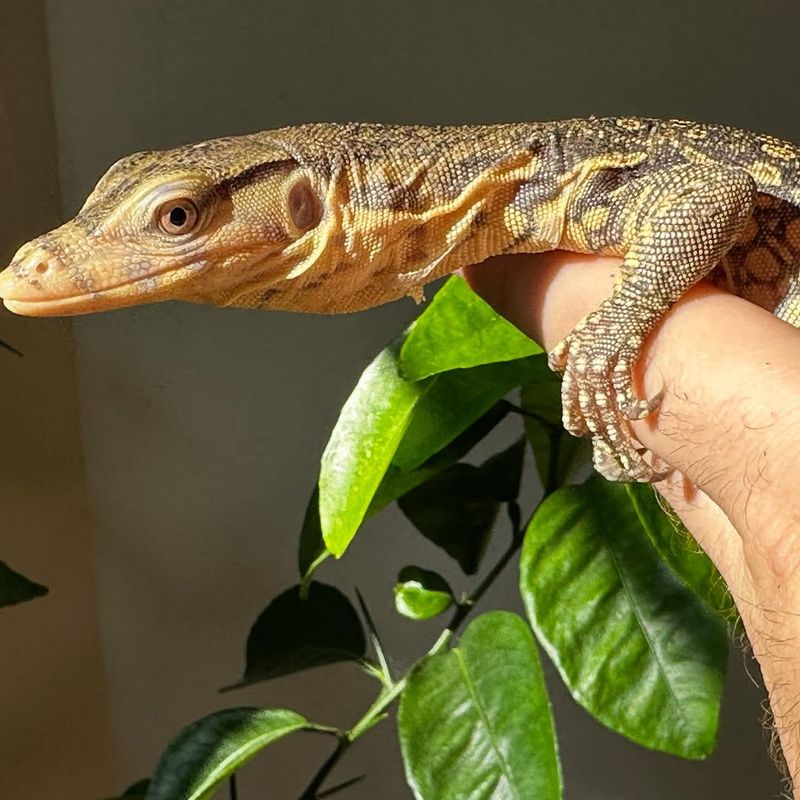
The Asian Water Monitor is a semi-aquatic giant that truly needs room to roam. Growing up to 9 feet, these lizards are among the largest in the world. Their active nature means they require a spacious habitat that supports both their terrestrial and aquatic lifestyles.
A suitable enclosure for an Asian Water Monitor should be at least 12 feet long and offer a large water source for swimming. This setup allows them to exercise and maintain their health. Additionally, providing platforms for basking and hiding spots enriches their environment.
Neglecting the space requirements of these impressive reptiles can lead to stress and health issues. These monitors are not for the faint-hearted, requiring dedicated caretakers who can meet their spatial and environmental needs. By offering a large habitat, owners can witness the full range of their behaviors and enjoy a truly magnificent pet.
3. Savannah Monitor
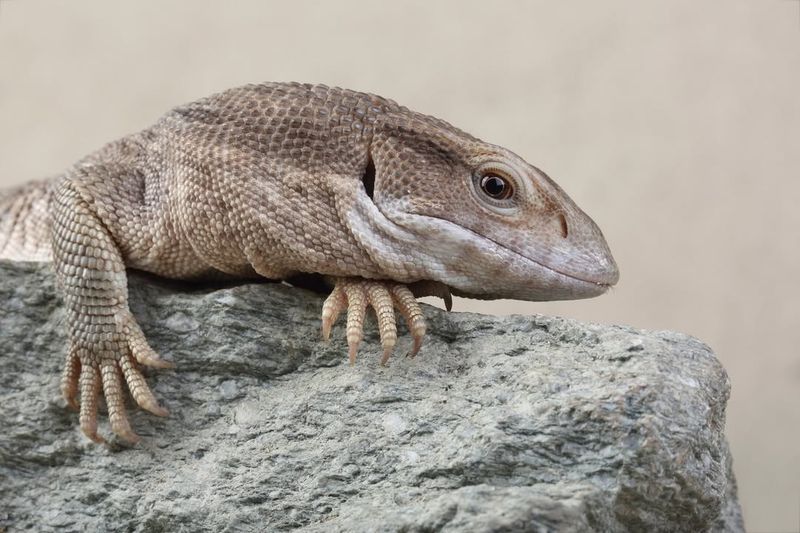
Savannah Monitors are often underestimated in terms of their spatial needs. These robust lizards, native to the African savannahs, can grow up to 5 feet long and are known for their inquisitive nature.
To properly care for a Savannah Monitor, an enclosure should be at least 8 feet long and 4 feet wide, allowing ample space for exploration and exercise. The habitat should mimic their natural environment with rocks, branches, and a substrate suitable for digging.
Inadequate space can result in lethargy and obesity, as these monitors need room to roam and hunt. For those ready to take on the responsibility, providing a spacious and enriched environment is crucial. A well-cared-for Savannah Monitor is an active and fascinating pet, full of personality and charm. Meeting their spatial demands ensures their well-being and allows them to thrive in captivity.
4. Green Iguana
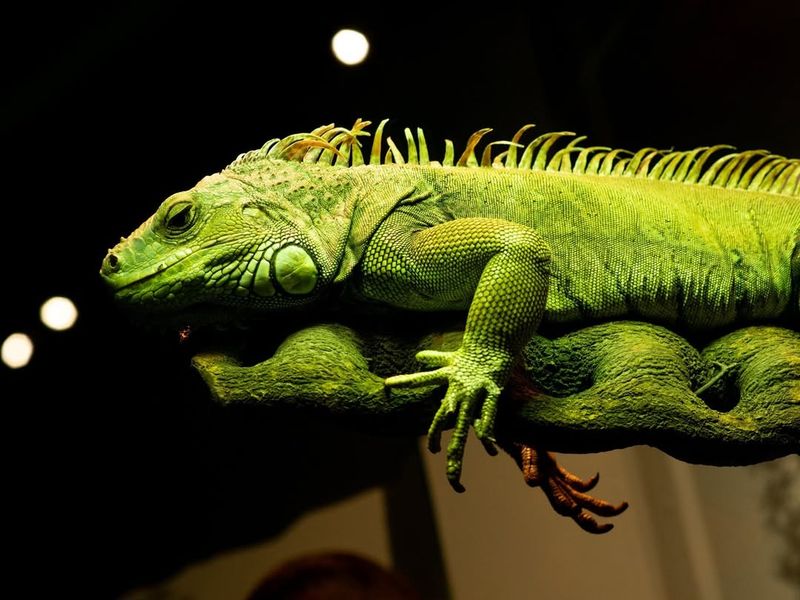
The Green Iguana is not your typical small pet lizard. Despite its common presence in pet stores, this majestic reptile can grow up to six feet long, including its tail. Its size alone demands a spacious environment for proper exercise and mental stimulation.
Many owners are unprepared for the iguana’s space needs, often housing them in enclosures that are far too cramped. To thrive, a Green Iguana requires an enclosure measuring at least 12 feet long and 6 feet high. This setup should include branches for climbing, basking areas, and lush greenery to recreate its native tropical habitat.
Inadequate space can lead to stress and health issues. For those considering this reptile, it’s crucial to plan ahead and provide the extensive area needed for a happy and healthy life. A commitment to their spacious needs ensures these vibrant creatures can exhibit their natural behaviors fully.
5. Rhinoceros Iguana
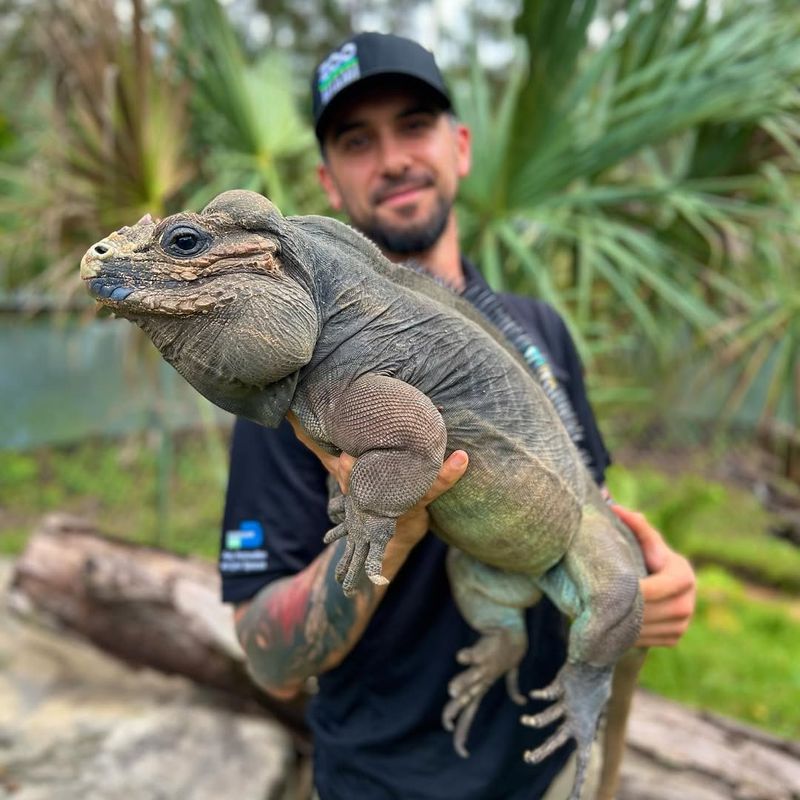
Rhinoceros Iguanas are impressive creatures with distinctive features and substantial spatial needs. These lizards can reach up to 4.5 feet in length and have a robust build that requires significant room for movement.
An ideal enclosure for a Rhinoceros Iguana should be at least 10 feet long and 6 feet wide. This space allows for climbing, basking, and exploring, essential activities for their physical and mental health. The environment should replicate their rocky, arid habitats with plenty of hiding spots.
Proper space allocation prevents stress and ensures these fascinating reptiles can exhibit natural behaviors. Owners must be prepared to invest in a large habitat to keep their iguana comfortable and content. By providing the appropriate space, these iguanas can become intriguing and rewarding companions, showcasing their unique personalities.
6. Nile Monitor
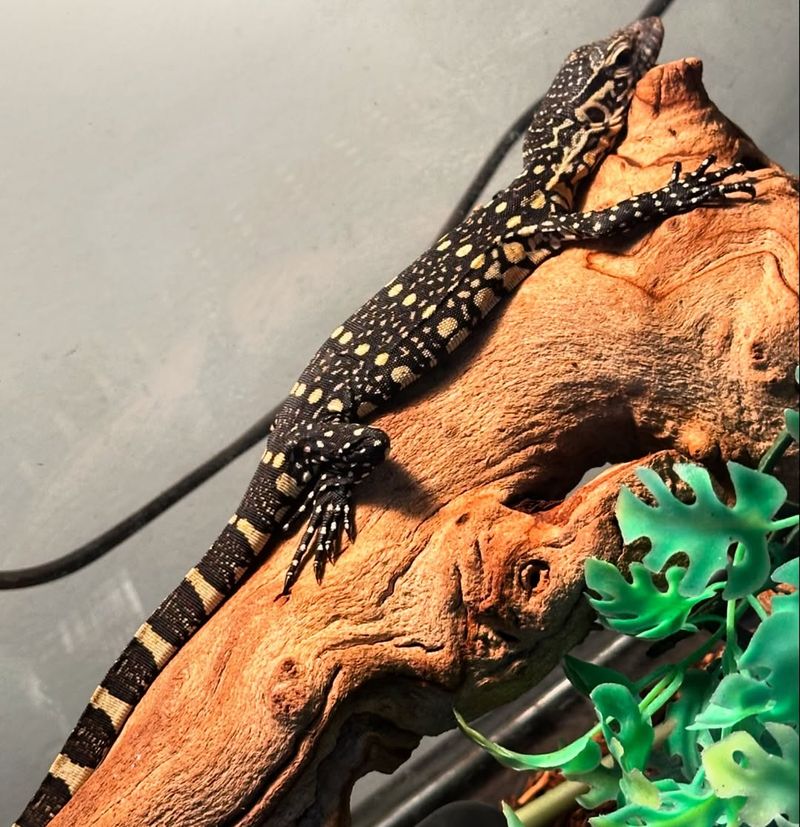
Nile Monitors are powerful lizards that require considerable space to accommodate their dynamic lifestyles. Growing up to 7 feet, these reptiles are among the largest monitor lizards and need an environment that can match their size and activity levels.
Their enclosure should be no less than 12 feet long, incorporating both land and water areas to allow for swimming and basking. A setup that mimics their natural riverbank habitat, with plenty of climbing and hiding spots, is essential.
Failing to provide sufficient space can result in stress and behavioral issues. For committed enthusiasts, Nile Monitors offer a rewarding experience, but they demand a serious commitment to their environmental needs. A spacious, well-enriched habitat ensures these formidable lizards can thrive and display their full range of behaviors.
7. Perentie
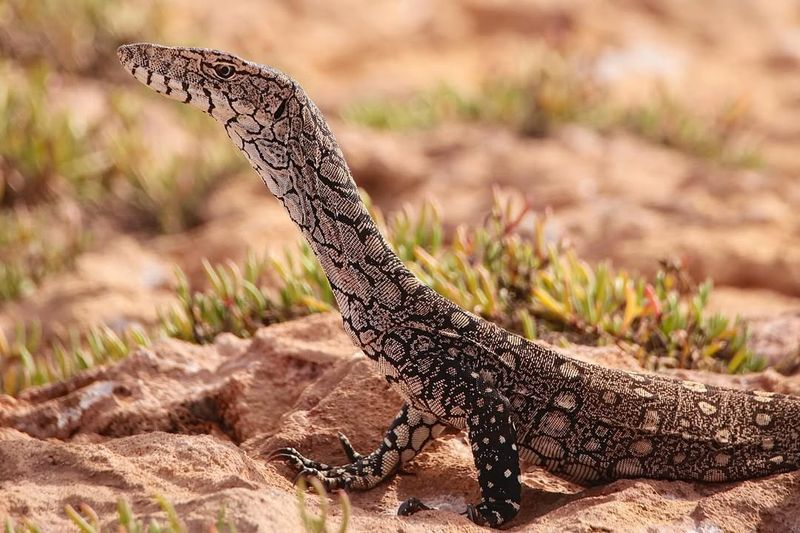
Perenties are the giants of the Australian outback, requiring more space than most might imagine. These formidable lizards can grow over 8 feet long and are known for their speed and agility.
To house a Perentie, an enclosure must be expansive, at least 15 feet long, to allow for their active lifestyle. The habitat should replicate their desert environment, with sand, rocks, and areas for basking. Providing an enriched setting with hiding and climbing features is crucial for their well-being.
Without adequate space, Perenties can become stressed and under-stimulated. Offering a properly sized habitat allows these lizards to express their natural behaviors and thrive. For those passionate about reptile care, accommodating a Perentie’s spatial needs is a rewarding challenge, offering the satisfaction of knowing these majestic creatures are living their best lives.
8. Crocodile Monitor
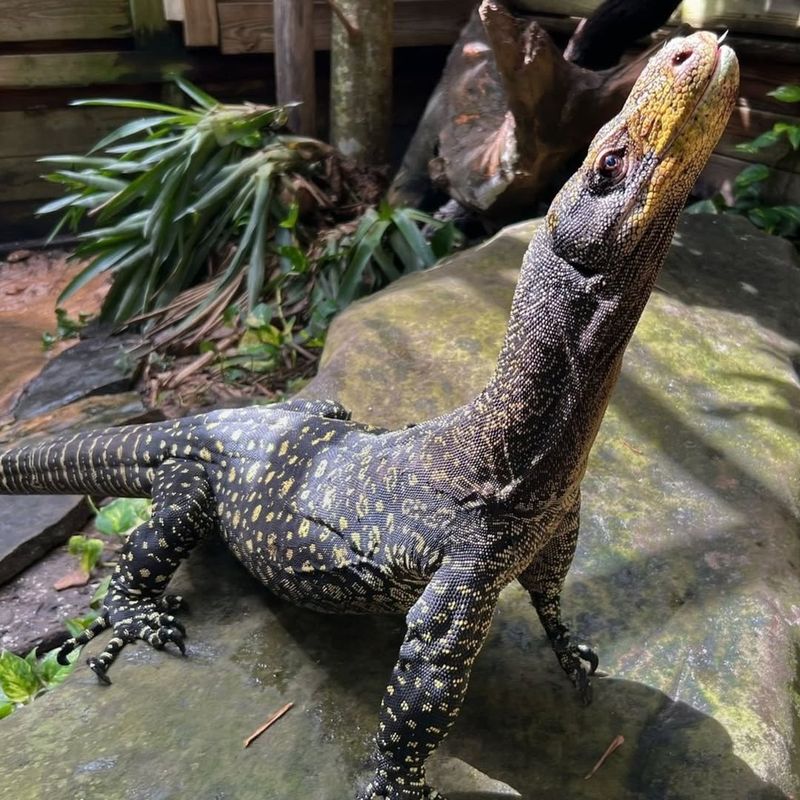
Crocodile Monitors are arboreal lizards that need exceptional space to thrive. Native to New Guinea, they can grow up to 8 feet long, with a significant portion being their tail, which aids in balance and climbing.
An enclosure for a Crocodile Monitor should be at least 10 feet high and 12 feet long, offering vertical space for climbing. The habitat should mimic a jungle setting, with plenty of branches and foliage for exploration and hiding.
Inadequate space leads to stress and health complications. Dedicated caretakers who provide the necessary environment can enjoy the full majesty of these lizards. With their sharp claws and agile movements, Crocodile Monitors are fascinating to observe when given the room to roam and display their natural behaviors. Their care requires commitment, but the reward is witnessing their true splendor.
9. Komodo Dragon
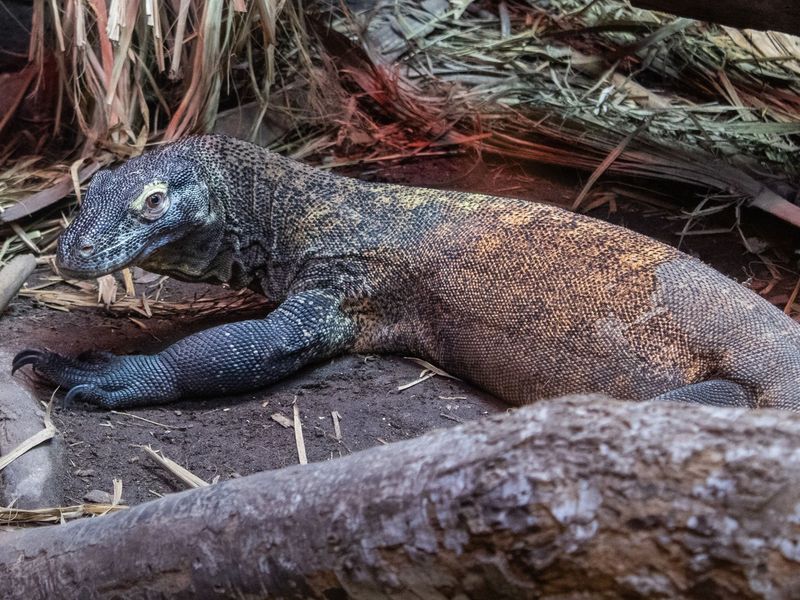
The Komodo Dragon is the titan of the lizard world, requiring vast amounts of space due to its sheer size and power. These legendary reptiles can grow over 10 feet long and weigh more than 150 pounds.
Their enclosures must be exceedingly large, ideally spanning at least 30 feet long, to accommodate their need for movement and exploration. The habitat should mimic their natural environments with both open spaces and shaded areas for resting, along with a pool for swimming.
Given their size, Komodo Dragons are not typical pets and are primarily found in zoos and specialized facilities. However, understanding their massive space needs highlights the importance of proper care and habitat design for any large lizard. For those responsible for their care, providing such an environment ensures these remarkable creatures can thrive and inspire awe with their presence.
10. Spiny-tailed Monitor
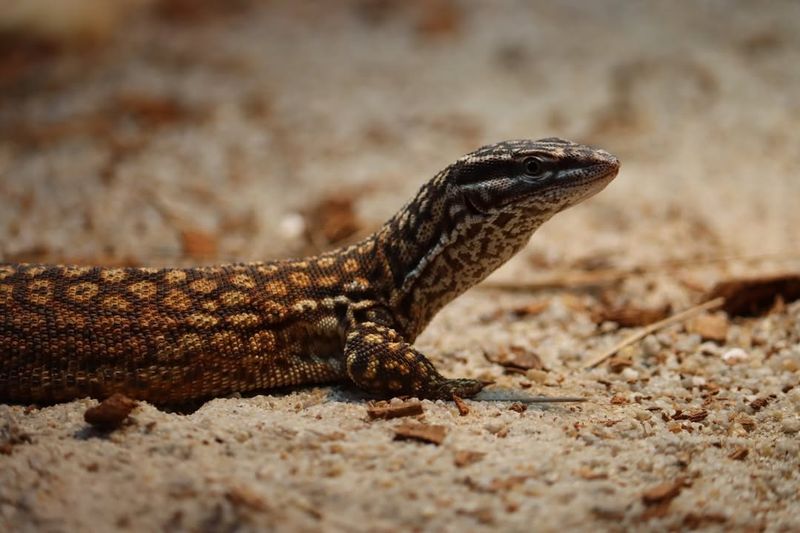
Spiny-tailed Monitors are small but mighty, known for their distinctive tails and active lifestyles. Despite their relatively modest size of up to 2 feet, these lizards need ample space to thrive.
An enclosure for a Spiny-tailed Monitor should be at least 6 feet long. This space allows for climbing, digging, and basking, crucial for their well-being. The habitat should replicate their rocky, arid environment with plenty of hiding places and branches.
Providing inadequate space can lead to stress and inactivity. For enthusiasts who appreciate their unique features, offering a spacious and enriching environment is vital. These monitors are engaging pets, full of energy and character, and meeting their spatial requirements ensures they can live healthy and active lives. By respecting their needs, owners can enjoy the company of these spirited lizards.
11. Dumeril’s Monitor
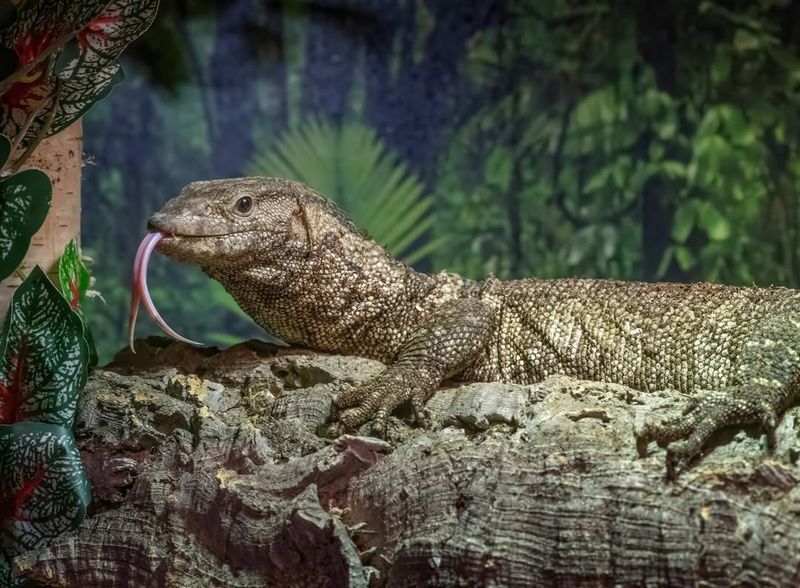
Dumeril’s Monitors are intriguing and often overlooked reptiles that require more space than their size might suggest. Growing up to 4 feet long, these lizards are known for their inquisitive nature.
They need an enclosure that is at least 8 feet long to accommodate their active lifestyle. The habitat should include ample ground cover, branches for climbing, and a water source for soaking. Replicating their natural forest environment helps keep them healthy and content.
Failing to provide enough space can lead to lethargy and stress. For those who appreciate their unique behaviors, offering a large and enriched habitat is essential. Dumeril’s Monitors are rewarding pets for dedicated caretakers, displaying fascinating behaviors when given the room to explore and thrive. Their care requires commitment, but the experience of observing their natural antics makes it worthwhile.
12. Gila Monster
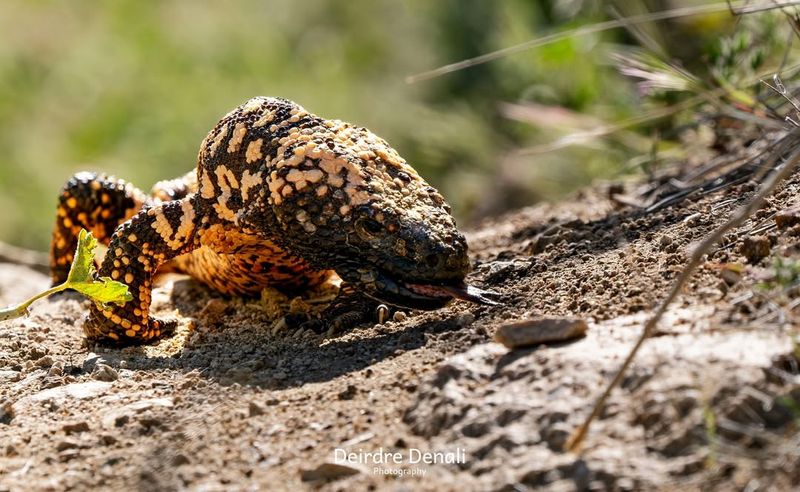
The Gila Monster is a venomous lizard with captivating looks and specific spatial needs. Despite their smaller size, reaching up to 2 feet, these lizards require a carefully designed habitat.
An enclosure for a Gila Monster should be at least 4 feet long, providing space for burrowing and exploration. The habitat should mimic their arid, rocky environment, with plenty of hiding spots and a shallow water dish.
Inadequate space can lead to stress and unwanted behaviors. For those fascinated by their unique appearance and habits, offering a spacious and secure environment is crucial. These lizards are not for the casual pet owner, requiring careful planning and respect for their needs. By providing the right habitat, owners can enjoy the experience of having one of nature’s most intriguing reptiles as a companion.
13. Lace Monitor
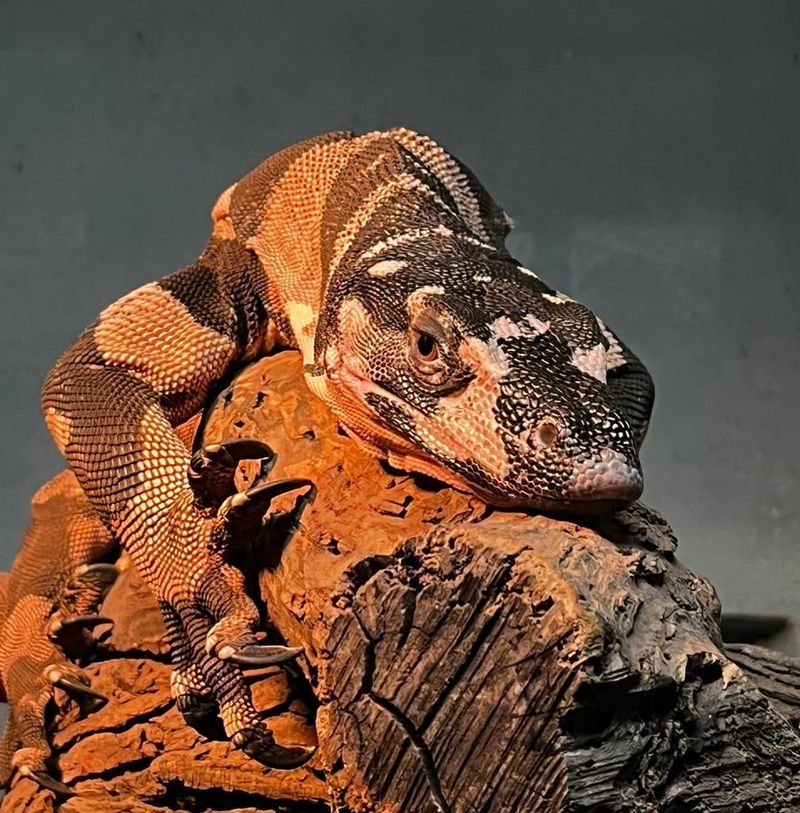
Lace Monitors are striking lizards, known for their impressive size and distinctive patterns. They can grow up to 7 feet long and need substantial space to accommodate their active nature.
An enclosure for a Lace Monitor should be at least 10 feet long, with ample vertical space for climbing. The habitat should include branches, rocks, and areas for basking, replicating their native Australian woodland environment.
Without proper space, Lace Monitors can become stressed and develop health issues. For those passionate about reptiles, providing a spacious and enriching environment is essential. These monitors are fascinating to observe, displaying a range of natural behaviors when given the room to thrive. Their care requires dedication, but the reward is a healthy and dynamic pet that captivates with its presence.
14. Caiman Lizard
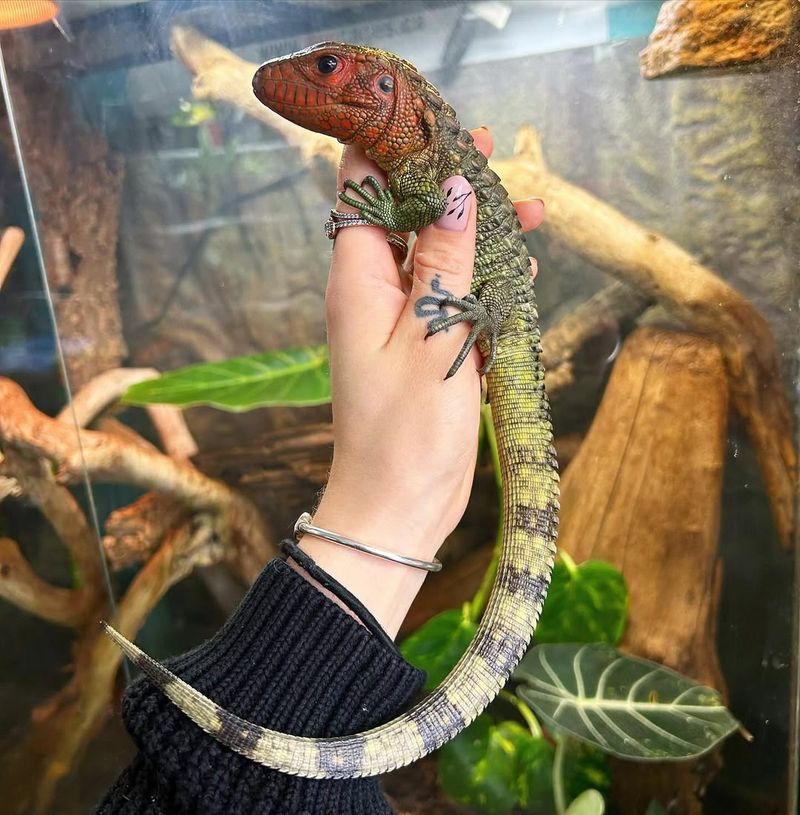
Caiman Lizards are colorful and captivating reptiles that require more space than most anticipate. Growing up to 5 feet long, these lizards are semi-aquatic and need an environment that caters to both land and water activities.
Their enclosure should be at least 8 feet long, with a large water area for swimming and a land section for basking and exploring. This setup mimics their South American riverine habitats and keeps them active and healthy.
Neglecting their spatial needs can lead to stress and health issues. For those who can provide the necessary environment, Caiman Lizards offer a rewarding experience with their striking appearance and engaging behaviors. Their care demands a significant commitment, but the result is a vibrant and lively pet that brings a touch of the tropics into any home.
15. Ackie Monitor
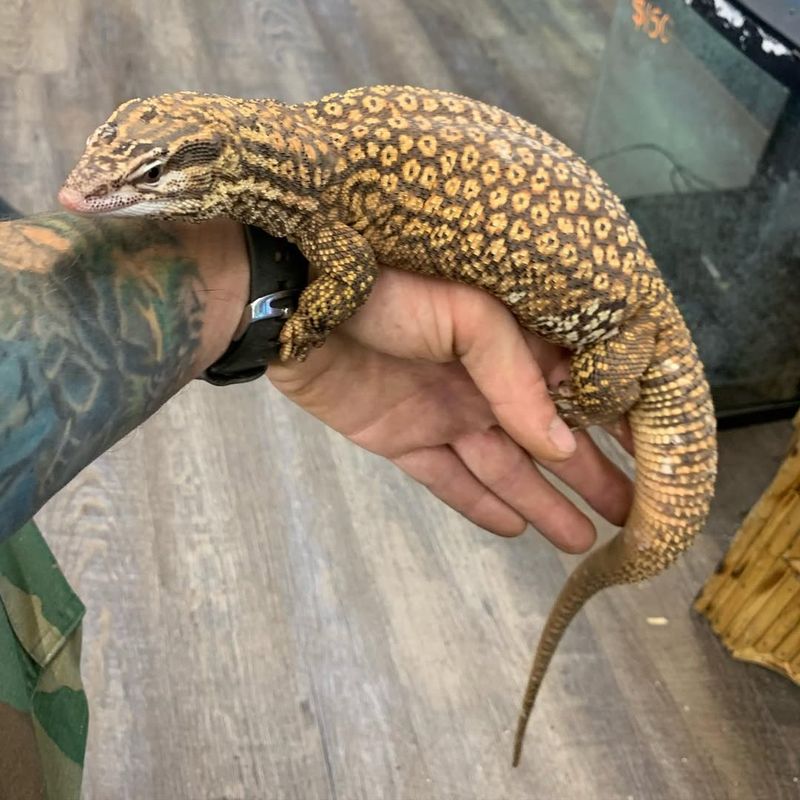
Ackie Monitors, though small compared to other monitors, need more space than their size suggests. These active lizards, reaching up to 2 feet, are full of energy and require an environment that reflects this.
An enclosure for an Ackie Monitor should be at least 5 feet long, providing room for climbing, digging, and basking. The habitat should mimic their arid, rocky environment with plenty of hiding spots and branches.
Without sufficient space, Ackie Monitors can become stressed and inactive. For those interested in their lively nature, offering a spacious and enriching environment is crucial. These monitors are engaging pets, known for their inquisitive behaviors and vibrant personalities. Meeting their spatial needs ensures they remain healthy and active, allowing owners to enjoy their charming company fully.
16. Black-throated Monitor
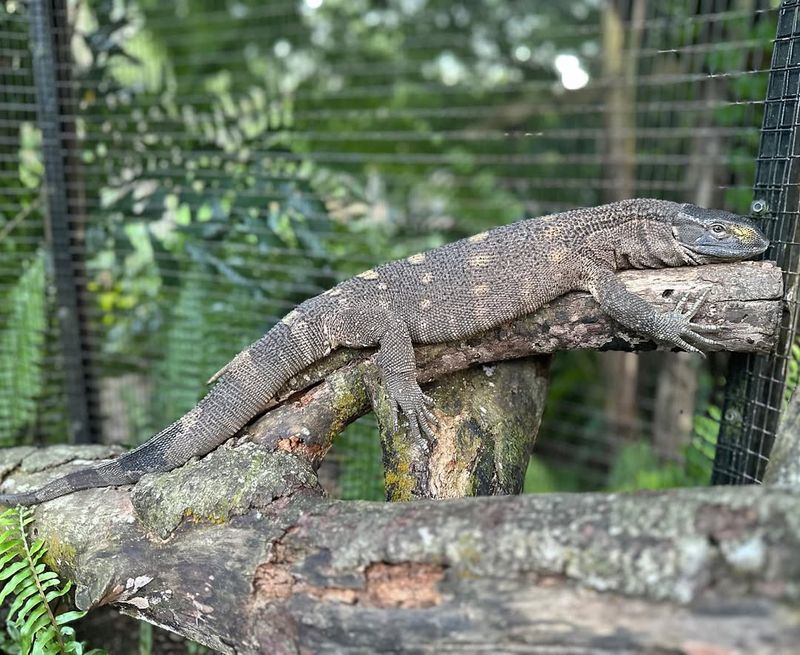
Black-throated Monitors are impressive lizards requiring much more space than anticipated. These giants can grow over 7 feet long and weigh up to 60 pounds, demanding large enclosures to thrive.
An ideal habitat for a Black-throated Monitor should be at least 12 feet long, providing ample room for movement and exploration. The environment should include areas for basking, climbing, and a pool for soaking, mimicking their natural savannah habitats.
Failing to provide adequate space can lead to stress and health issues. For those who can meet their needs, Black-throated Monitors offer a rewarding challenge, showcasing a range of fascinating behaviors when given the room to express themselves. Their care is not for the faint-hearted, but the satisfaction of providing a suitable environment for these majestic creatures is unparalleled.
17. The Majestic Blue-Tongued Skink
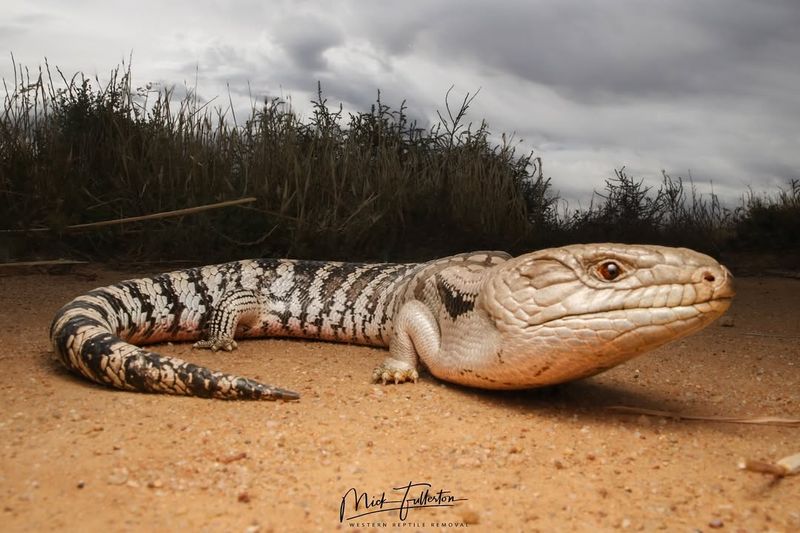
The Blue-Tongued Skink, native to Australia, is a fascinating creature that many assume can thrive in modest enclosures. However, these skinks need more room than you might think.
Despite their relatively small size compared to other large lizards, they are active explorers. A spacious terrarium filled with diverse flora and ample hiding spots significantly enhances their well-being.
To mimic their natural habitat, include rocks and branches for climbing. These skinks are also known for their curious nature, often engaging with their environment, which demands more space for them to explore and stay stimulated.

